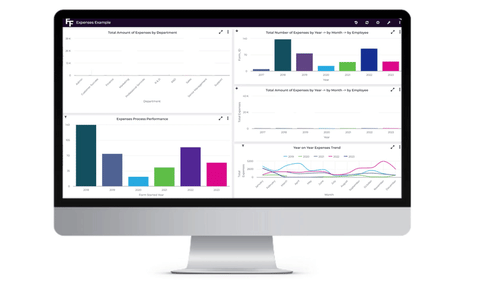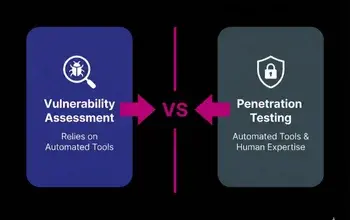In the digital age, data is not just valuable, it is indispensable. Accurate data fuels the engine of data analytics, serving as the bedrock upon which organizations make informed decisions, optimize operations, and stay ahead of the curve.
Let’s delve into the critical importance of accurate data for data analytics, explore how digital process automation can enhance data gathering, emphasize the significance of best practice identification, and discuss the need for organizations to embrace digital data collection to support effective data analytics. Additionally, let’s examine the role of predictive decision-making based on historical data collected.
What Are the Benefits and Positive Outcomes of Process Automation Analytics?
The Crucial Role of Accurate Data in Process Automation Analytics 📊
Data analytics is the process of extracting valuable insights from raw data, enabling organizations to make data-driven decisions. To appreciate the full power of process automation analytics, we must first understand the pivotal role that accurate data plays:
1. Reliability:
Accurate data ensures the reliability of the insights and decisions derived from analytics. When data is free from errors and inconsistencies, it instills confidence in the results.
2. Relevance:
Accurate data is always relevant to the questions you seek to answer. Irrelevant or outdated data can lead to erroneous conclusions and wasted resources.
3. Informed Decision Making:
Informed decision-making relies on accurate data. Whether it is optimizing business processes, developing new products, or crafting public policy, reliable data forms the foundation of sound choices.
4. Predictive Accuracy:
Accurate data is critical for building predictive models. Machine learning and artificial intelligence (AI) algorithms depend on the quality of data to make precise predictions.
5. Cost Efficiency:
High-quality data saves time and resources. With accurate data, organizations are less likely to embark on futile efforts or costly mistakes.
Leveraging Digital Process Automation for Data Gathering
Digital Process Automation (DPA) is a powerful tool that employs software to automate and streamline business processes. When applied to data collection, DPA can significantly enhance the accuracy and efficiency of data gathering. Here is how it works:

1. Data Standardization
DPA tools standardize data collection processes, ensuring that data is gathered consistently and uniformly. This minimizes errors and improves data quality by adhering to predefined standards.
2. Data Validation
DPA systems incorporate validation rules to assess data for accuracy and completeness. If data does not meet the specified criteria, it can be flagged for review or correction, ensuring that only high-quality data is included in analysis.
3. Data Integration
DPA can seamlessly integrate with various data sources and systems, simplifying the automated extraction of data. This reduces the need for manual data entry, thus minimizing the chances of human error.
4. Data Quality Monitoring
DPA solutions often include monitoring and reporting features, allowing real-time tracking of data quality. This enables proactive identification and correction of data quality issues, ensuring data remains accurate and reliable over time.
5. Data Security
DPA tools typically offer robust security measures to protect data during collection, storage, and transmission. This safeguards data accuracy and privacy, an essential aspect of modern process automation analytics.
The Importance of Best Practices in Data Collection and Management
While digital process automation can significantly enhance data collection, it is essential to establish and adhere to best practices in data collection and management. Here are some key best practices:
1. Clearly Defined Objectives:
Begin with clearly defined objectives for your data collection efforts. Understanding what insights, you seek will guide the entire data collection process, ensuring data is collected with a purpose.
2. Data Quality Standards:
.png?width=300&height=300&name=compliance%20(2).png)
Establish data quality standards, encompassing factors like accuracy, completeness, and timeliness. Ensure that all collected data adheres to these standards.
3. Data Governance:
Implement data governance policies and procedures to oversee data collection, storage, and access. Assign responsibilities for data quality and compliance, ensuring that everyone understands their role in maintaining accurate data.
4. Documentation:
Maintain comprehensive documentation of your data collection processes. This includes data sources, collection methods, validation rules, and any changes made to the process. Documentation is critical for transparency and accountability.
5. Data Cleaning and Transformation:
Regularly clean and transform data to correct errors and inconsistencies. This ongoing process ensures that the data used in analytics remains accurate and reliable.
6. Data Security and Compliance:
Adhere to data security and compliance regulations. Protect sensitive information and ensure data privacy is maintained throughout the data collection and analytics process.
7. Continuous Improvement:
Continuously evaluate and improve data collection processes. Seek feedback from data analysts and end-users to identify areas for enhancement and ensure that data quality remains high.
The Organizational Shift Towards Digital Data Collection
Embracing digital data collection is not just a technological shift, it is a cultural shift that an entire organization must embrace. Here are some compelling reasons for organizations to adopt digital data collection methods for effective process automation analytics:
1. Efficiency and Speed:
Digital data collection processes are often faster and more efficient than traditional manual methods. This means organizations can collect and analyze data more swiftly, leading to quicker decision-making.
2. Consistency and Accuracy:
Digital data collection minimizes human error by standardizing processes and validating data. This results in more consistent and accurate data, providing a more reliable foundation for analytics.
3. Scalability:
As organizations grow, their data collection needs increase. Digital methods can scale more easily to accommodate higher data volumes and diverse data sources, ensuring that the data infrastructure is adaptable.
4. Real-Time Insights:
Digital data collection allows for real-time process automation analytics, enabling organizations to react swiftly to changing market conditions, customer preferences, and emerging trends.
5. Competitive Advantage:
Organizations that embrace digital data collection are better positioned to gain a competitive edge. They can exploit data-driven insights to identify opportunities, mitigate risks, and innovate more effectively.
Process Automation Analytics for Predictive Decision-Making
Data analytics is not just about making sense of historical data, it is also a powerful tool for predictive decision-making. Here's how data analytics helps organizations foresee and prepare for the future:
 1. Pattern Recognition:
1. Pattern Recognition:
Data analytics can identify patterns and trends in historical data. By recognizing these patterns, organizations can make predictions about future events or behaviors.
2. Predictive Modelling:
Predictive analytics uses historical data to build models that forecast future outcomes. These models can help organizations make informed decisions about resource allocation, inventory management, customer behavior, and more.
3. Risk Mitigation:
Predictive analytics can identify potential risks and issues before they escalate. By anticipating challenges, organizations can proactively implement strategies to mitigate those risks.
4. Customer Insights:
Predictive analytics can reveal customer preferences, behaviors, and needs. This information helps organizations tailor their products, services, and marketing strategies to meet customer expectations.
5. Operational Optimization:
Predictive analytics can optimize operations by forecasting demand, scheduling maintenance, and managing resources efficiently. This results in cost savings and improved performance.
The Consequences of Using Inaccurate Data for Analytics
The impact of data analytics based on manually collected, inaccurate data can be detrimental to an organization in several ways. While data analytics has the potential to deliver valuable insights and support informed decision-making, these benefits are significantly compromised when the underlying data is inaccurate or unreliable. Here are some of the key consequences of using inaccurate data for analytics:
 Misleading Insights: Inaccurate data can lead to misleading insights and conclusions. Process Automation Analytics algorithms rely on the assumption that the data they analyze is accurate and representative of the real-world situation. When the data is flawed, the results can be far from the truth, potentially leading to misguided decisions.
Misleading Insights: Inaccurate data can lead to misleading insights and conclusions. Process Automation Analytics algorithms rely on the assumption that the data they analyze is accurate and representative of the real-world situation. When the data is flawed, the results can be far from the truth, potentially leading to misguided decisions.- Poor Decision-Making: Decision-makers who rely on analytics based on inaccurate data may make poor decisions. These decisions can have far-reaching consequences, such as financial losses, missed opportunities, or operational inefficiencies.
- Wasted Resources: Analyzing inaccurate data consumes resources in terms of time, money, and human effort. Organizations invest in data collection, storage, and analytics tools, and when these are applied to inaccurate data, those investments are wasted.
- Erosion of Trust: Inaccurate data erodes trust in the analytics process. When decision-makers realize that the insights and predictions based on data analytics are frequently incorrect, they may lose confidence in the entire data-driven decision-making process.
- Operational Inefficiencies: When analytics are based on inaccurate data, organizations may implement strategies or changes that do not align with the actual challenges or opportunities they face. This can result in operational inefficiencies, wasted resources, and decreased competitiveness.
 Missed Opportunities: Inaccurate data can obscure valuable insights and opportunities. Organizations may fail to recognize market trends, customer preferences, or emerging risks, missing out on opportunities for growth or early intervention.
Missed Opportunities: Inaccurate data can obscure valuable insights and opportunities. Organizations may fail to recognize market trends, customer preferences, or emerging risks, missing out on opportunities for growth or early intervention.- Reputation Damage: In cases where inaccurate data affects customer-facing aspects of a business, such as marketing campaigns or product recommendations, it can harm the organization's reputation and erode customer trust.
- Compliance and Legal Issues: In certain industries, the use of inaccurate data for decision-making can lead to compliance and legal issues. For example, using inaccurate financial data may result in regulatory violations or legal consequences.
 Resource Allocation Challenges: Inaccurate data can make it difficult to allocate resources effectively. For example, if sales projections are based on incorrect historical data, an organization may over-allocate resources to certain products or markets while neglecting others.
Resource Allocation Challenges: Inaccurate data can make it difficult to allocate resources effectively. For example, if sales projections are based on incorrect historical data, an organization may over-allocate resources to certain products or markets while neglecting others. - Quality of Service: In sectors like healthcare, where patient outcomes depend on accurate data, using inaccurate information can lead to suboptimal care and patient dissatisfaction.
To Conclude...
Accurate data is the lifeblood of data analytics, providing the foundation for informed decision-making and predictive insights. Digital process automation enhances data collection, ensuring the accuracy, consistency, and efficiency of the process. Coupled with best practices in data collection and management, organizations can build a robust data infrastructure that supports effective data analytics.
To thrive in the data-driven landscape, organizations must embrace digital data collection methods. The benefits of efficiency, accuracy, scalability, real-time insights, and competitive advantage make a compelling case for this shift.
Finally, data analytics is not just a tool for understanding the past, it is a window to the future. By leveraging predictive analytics, organizations can make strategic decisions that anticipate challenges, capitalize on opportunities, and remain at the forefront of their industries. In a world driven by data, embracing accurate data and data analytics is not just a choice, it is a necessity for success.
Stay tuned for my next blog where I'll touch on the benefits of having a robust Analytics capability built into your digital process automation as opposed to an add-on.
.png) By
By 




